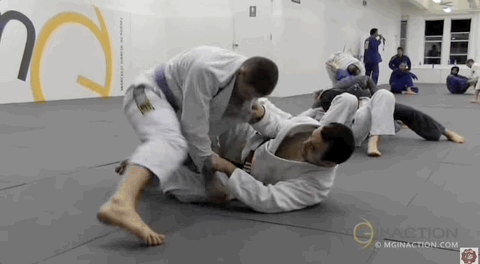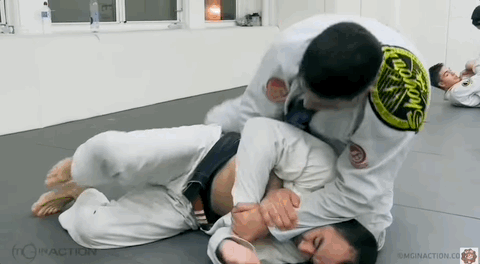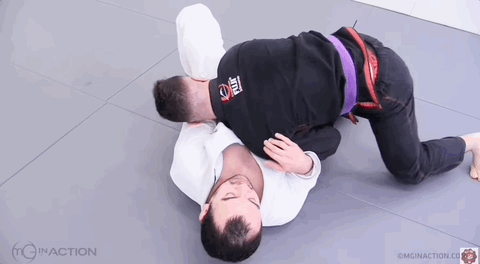Marcelo's Sit-Up & Elbow Push Escape through the Ecological Approach
Embracing Creativity in BJJ: Learning Marcelo's side control escapes with a Pseudo-Ecological Approach
If you're like me and obsessed with BJJ, you've probably heard the term "ecological approach."
For the past two weeks, I've been quite fascinated with this new learning method.
Greg Souders is probably the go-to person regarding the specific application of this approach in BJJ. If you want to delve deeper, I'm reading a book that offers a great introduction to the subject.
For this issue, I decided to switch things up and employ a pseudo-ecological approach to teaching.
I'll briefly explain the basics of the whole philosophy and then do my best to use a version to help you learn something. I can't help but mix the ecological approach with some teachings from my favorite book on performance, "The Inner Game of Tennis."
Let's see if I can help you improve something, and hopefully, I will convince you to incorporate pieces of this approach into your training.
One of the most fundamental elements of this approach is to focus on the desired outcome instead of focusing on the "correct" steps that supposedly can produce the outcome every time. Spoiler: There's no correct way. This is similar to the end-goal method we covered in a previous issue.
But it doesn't mean you can do anything... If you do anything, you'd probably be no better than your average spazzy white belt.
You train using this approach mostly by creating games that encourage players to do things that can help you get to or control a desired position. I recommend watching this video of Coach Souders explaining the approach and showing examples.
As you can see in the video, the games are tailored to help players understand and learn foundational skills that are part of the underlying themes in BJJ and are the actual cause of the effectiveness of any movement.
So... how do we apply it this week?
We're going to try to apply a Pseudo-Ecological approach... We'll cover one technique and attempt to apply a version of the approach.
I'll be honest. I'm still learning about this approach. That’s why I’m adding the word pseudo (as my insurance against keyboard warriors 😂.)
So I might be butchering part of it, and I can't deny the impact that "The Inner Game of Tennis" has had on the way I train and learn.
I don't want you to follow a single step. And I also don't want to give you dogmatic pointers that will be impossible to reproduce under real resistance.
I want you to let your body self-organize in the most logical way at each specific moment to achieve an outcome. And most importantly, I want you to come up with ways and games to help you train the principles I will mention later in the technique section.
I'm also going to add a bunch of GIFs of Marcelo doing the escape. No pointers other than the underlying concepts I'm about to mention. I want you to look at it without judgment, and next time you're training against live resistance, let your body... no, TRUST your body to self-organize and try to accomplish the final outcome. It won't work the first time, and that's okay. The idea is to let your body be creative and test different solutions until it finds something that works.
The Technique
I've always found the way Marcelo escapes and avoids passing fascinating... Why? Because it's somewhat contrarian to the prescriptive ways we've been told are the "correct" ways to escape and prevent a pin after someone passes our legs. What interests me most is that Marcelo always does it differently.
Sometimes it even looks kind of sloppy... but he achieves the end result, which is to unbalance his opponent, establish a solid frame that controls the distance, twist their spine (which makes them much weaker when using hinging movements with their hips and neck), and create space to control the inner position entirely for enough time to regain guard.
Underlying Foundational Principles:
At the core of this technique, there are four things that Marcelo is doing that serve as the foundation of this move:
He controls the distance by introducing a solid frame between himself and his opponent.
He unbalances his opponent.
He twists his opponent's spine and redirects their motion to create more unbalancing.
He uses the open space between himself and his opponent to introduce as many frames as possible (Guard).
But why isn't this technique taught in most schools? It's because teachers are not used to focusing on gaining requirements and allowing their students to self-organize to achieve the goal. And if they teach it as a step-by-step movement, they make it useless and ineffective against a resisting opponent.
If you want to learn more about the Ecological Approach, you should start by watching this video and listening to this episode from the BJJMM Podcast.
That's it! This is different and more theoretical, so please let me know if it helps you.












